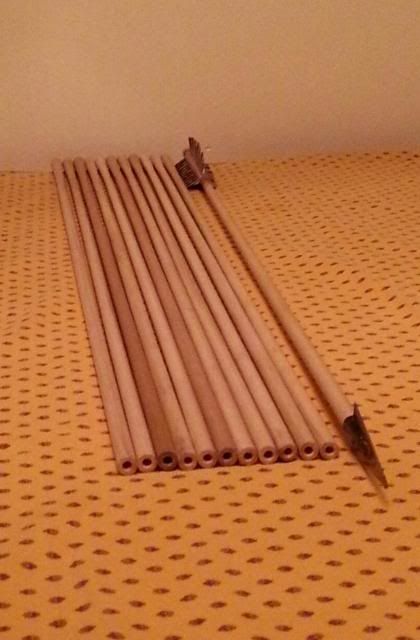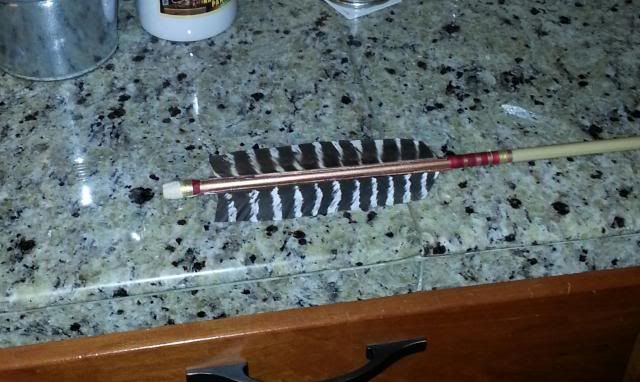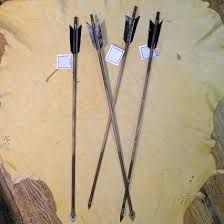Home › Forums › Friends of FOC › TAPERED SHAFTS…historically speaking
-
AuthorPosts
-
-
According to writings of Manchurian archers and historians during the Qing dynasty from the late 15th century to late 19th century, those arrows had a slender area in the back 1/3 of the arrow shaft…then flared out again for a large nock in the final 3″.The reasons given was NOT for FOC of the shaft…but was to straighten out paradox! The vibration and movement from paradox was transfered into the longer than normal feathers. I tried it and could not see any paradox and they flew quicker. These Chinese not only invented gun powder but also the modern day tapered arrow!!
-
Most cultures and people’s of the world use the thumb as the primary bow drawing technique. Except for the Apache most of our own native Americans used the thumb to draw and release. Most of our traditional shooting dates back to the English longbow/warbow which indeed needed the entire fist to pull back 140 lb yew longbow!
-
I’m not sure that it is the bow weight that was a deciding factor in the type of release developed. Many of the Ottoman bows were as heavy (and sometimes heavier) in draw weight as the English longbows, and were fired with the thumb ring release.
The PNG natives bow’s were somewhere in the 80 to 90 pound draw weight range,. They use a finger release.
I’m firmly convinced that our early ancestors were far more advanced in the understanding of archery than are many of our contemporaries, and I believe they experimented extensively with bow design, arrow design and shooting techniques.
Ed
-
I don’t know why English archers did not use the thumb ring. I can see how it was not needed due to the length of the bow and the string angle whereas design of many Asian bows were shorter and string pinch was more of a factor. My guess is that is why the thumb ring came into use. Many American Indian tribes used the thumb and finger with a heavy bow but were using a very short draw for less movement. They had the ability to get very close to game where any movement was much more critical than with distance shooting. Interesting subject matter and I hope to glean as much as I can from historical archers across the globe.
-
how about a picture of the arrow you shot? I’d like to see how you made the taper down / taper up transition.
Pretty cool!
-
I have been curious about the thumb ring – would there be any advantage to using a thumb ring with todays modern longbows? I am tempted to pick one up and experiment.
-
Kind of difficult for me to get pictures up on this site. Has kind of an hour glass profile. On thumb rings…practically all archers shoot from the opposite side of the bow. A few Mongolian horse archers shot off the left side. Thumb rings are good for shorter horse bows due to finger pinch and really not needed for a long bow
-
Along this line of thinking, I’ve wondered what kind of shaft tips the tiny stone “bird points” were mounted to. A standard diameter shaft would be so outsizied for these little broadheads that it would almost be like a blunt. And if they tapered the shafts down to fit the little heads, I’d think they would be really fragile and break with every shot … which sort of seems to cast doubt on the theory that bird points were commonly used for big game. And the FOC would be in the minus real. Can anyone shed informed light on this little mystery?
-
Kevin sent me these pics to get on here for folks to see..



Jim
-
http://archaeology.about.com/cs/lithics/a/thepoint.htm
Not debating, just passing on. 😀
-
Thanks, Ralph. I presume you mean “myth #2” about bird points being used for big game? If properly documented with research based on evidence I can well accept this. This overview does not do that. But that’s not my point of curiosity, which is how they attached such small points to shafts large and tip-strong enough to penetrate tough mammal hide and tissue? The quandary remains: If they narrowed the shaft tips to provide a nice tapered fit for a tiny point, how were those narrow tips strong enough to withstand penetration resistance? I have no position on the use of bird points, but only a question about how they were attached in such a way as to make them utilitarian for hunting. Darned old curiosity is like a brain worm. 😆
The young hen turkey I’m watching out my window scavenging below the bird feeder is quickly turning white with snow and doesn’t even seem to notice. Sometimes, “brainlessness” seems to offer a survival advantage. Just look at me!
-
Yeah I know David. I just came across that article while researching bird points with the hopes of finding an illustration of one attached to a shaft and thought it was just interesting material.
I haven’t found the right place yet to see little points on arrows but some day I’ll word the search right and I’ll come across something.
I might have to go to the Panhandle Plains Museum at the college in Canyon, TX. again and see what I can see. It is a very good museum and the Panhandle is rich in Native American history.
-
Ralph, as a Texican, you should be mighty proud of the Comanches, the N.A. equivalent to Mongollian horse warriors, the finest who ever lived. I went to high school with several “Comanch,” including one lovely girl named Janice Mommadaddy, who years later I learned was a niece of literary icon M. Scott Mommaday. And my wife had dated the great-great grandson of Quanah Parker before I came along. I have no interest in agricultural or “civilized” Indians, but only Plains Indians, those wild and free hunters and warriors. Although TX is far south of the classic buffalo plains, those Comanche of the Staked Plains were superb human beings. You’ve read Alan Lemay, I suppose?
-
Yes I’ve read and love the movies, The Searchers” and “The Unforgiven”.
The Comanche were fierce warriors and are still a proud people. I respect them and admire.
My heritage is Cheyenne.
The spirituality of the Native American people, their respect of nature, their ability to survive in a harsh environment and their love and respect of family are virtues lost.
-
Dave, the only intact arrows I’ve seen with ‘bird points’ were cane shafts with a rather long and heavy hardwood fore shaft to which the bird point was attached. The hardwood was, naturally, smaller in diameter than the cane, and much heavier in GPI. Thus it was the fore shaft, not the point weight, that provided the arrow’s FOC.
It’s hard to see the details in this photo but you can readily see the color change between the cane shaft are the much darker hardwood shaft. I’ve heard that black walnut and hickory were both popular fore shaft woods used by the southeastern tribes and that the heart wood of the Texas persimmon (which is not a true persimmon but, rather, a close relative of ebony, and is extremely hard, tough and heavy) was popular for this use in my area of South Texas. I have hundreds of the Texas persimmon trees on my property here in the Hill Country.
The only arrows of this type I’ve seen were also significantly longer that the usual Native American arrows, with the cane section being almost as long as a ‘normal’ arrow and the fore shaft extending for several more inches. – Ed
-
Thanks, Ed. I had wondered about foreshafts. Since we don’t have cane around here, they must have used another material for the arrow shafts. Unfortunately, the local Ute tribal museum has none such on display and no tribal archery history expert. As Ralph says, largely a culture lost.
-
Dave, I tried to locate more information on the western and planes American Indian tribes and detachable foreshaft arrows. I didn’t come up with much that was very specific on materials but if you will do a Google search for “american indian arrows with detachable foreshafts” with a bit of searching through the results you will find a number of references to such arrows being used. I even located one that had a brief reference to the Ute Indians using arrows with detachable foreshafts – http://www.nps.gov/history/history/online_books/berkeley/beals3/beals3f.htm
Ed
-
Thanks, Ed. Will do.
-
Dr. Ed Ashby wrote: The only arrows of this type I’ve seen were also significantly longer that the usual Native American arrows, with the cane section being almost as long as a ‘normal’ arrow and the fore shaft extending for several more inches. – Ed
Hey Ed, I was just pondering how I might go about making an arrow like that and something that immediately struck me was that I’d want to move that joint as far away from centre of balance as possible, as I assume that would be the point of maximum stress during flight.
Do you suppose that could be a cause of the extra length? Or do you reckon it’s more likely they’ve just added that foreshaft to a regular cane shaft for simplicity of manufacturing process?
Jim
-
-
AuthorPosts
- You must be logged in to reply to this topic.


